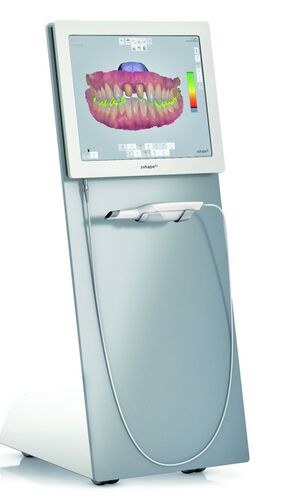Prothetics / Dentures
Beautiful and healthy teeth create a confident and beaming image. If one loses teeth through misalignment, an accident or improper hygiene, some degree of your quality of life inevitably follows. Moreover, teeth gaps, pain and permanent bone loss can be caused.
Dental prostheses offer the possibility for you to restore your natural appearance and the full functionality of your teeth. A distinction is made here between fixed and removable dentures. Fixed dentures include crowns, bridges, veneers and implants. Full or partial dentures belong to removable dentures.
Inlays and Partial Crowns
Inlays are used for middle to large tooth decay damage in the chewing surface of the back teeth. In contrast to complete crowns, partial crowns cover only part of the natural tooth . They are used in fewer severely damaged teeth.
When using a partial crown, a large part of the natural tooth substance can be maintained. Furthermore you can hardly or even not distinguish them from the natural tooth, because they are tooth shaded. In our office partial crowns can also be manufactured by means of a CAD/CAM unit, so called CEREC. This modern method for the production of tooth-colored inlays and partial crowns made of solid ceramics allows us a one session one time procedure without the classic impression technique.
Crowns
The application of artificial crowns replaces the natural layer of the tooth’s crown. It can be considered as a cap, coating and protecting the visible part of a tooth. By this treatment a severely damaged tooth is restored to its size and strength. The anatomical shape is aligned as much as possible to the natural dental crown.
Veneers
Veneers (synonym for capping) are sheer, translucent shells made of plastic or ceramic. With these, false positions of the tooth are compensated for as well as form and change of color. Through the application of veneers, highly aesthetic results are attained.
Bridges
Bridges are used to close the gaps between teeth. For that reason, at least two abutment teeth are ground and crowned. A bridge is a tight-fitting tooth replacement. The neighboring teeth of the missing tooth are ground and an impression is taken. Finally, in the dental lab, a bridge is produced and then firmly cemented onto the stump of the abutment tooth. A special form of the dental bridge is the adhesive bridge for the highly aesthetic front tooth area. Another name for an adhesive bridge is also Maryland-bridge; one understands a fixed bridge to replace missing teeth in the front tooth area. These briges are mounted on the enamela surface of a minimal ground tooth. It consists of a metal or a ceramic structure.
As an alternative to a bridge, an implant can be positioned and then the healthy tooth does not need to be ground.
Combined Denture (Telescope Technology)
If there are still sufficient teeth present for a crown anchorage, the telescopic prosthesis is a comfortable solution in order to replace several lost teeth. For the so-called combined tooth replacement, it consists of firmly anchored crowns in the mouth (primary telescope) and of a removable second part with the actual prosthetic teeth. Through this method, the telescopic prosthesis offers very good support when eating and talking and thus a very large degree of comfort for the patient.
Furthermore, no anchoring aids (such as clips) are visible, so that this form of dentistry is very aesthetically appealing.
Attachment Technique
The attachment prosthesis is suited for connecting tooth gaps with stable abutment teeth.
It is a particularly secure and stable holding device without visible connection elements and is therefore also very aesthetically attractive.
The attachment prosthesis is thus a partial prosthesis, that is attached through special precision parts onto the “remaining teeth.” On the backside of the last crown there is an insertion element, which fits exactly parallel to be inserted, which is incorporated into the prosthesis.
Full Denture
With a toothless jaw, the patient is most often supplied with a complete prosthesis. The challenge here is that not any natural teeth can be used for mounting. The prosthesis is solely attached through the suction power of the mucous membrane in the mouth. An exact fit of the prostheses base is essential for a good grip.
If the desire is for absolutely stable and complete prostheses not on the palate, this is only implemented via Implantate .
Clasp Denture
As the name already suggests, this type of tooth replacement is attached to one’s teeth with clips.
Thereby, the so-called armature teeth are ground with small troughs, in order to offer space for clip support.

